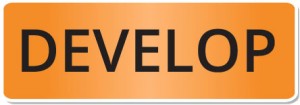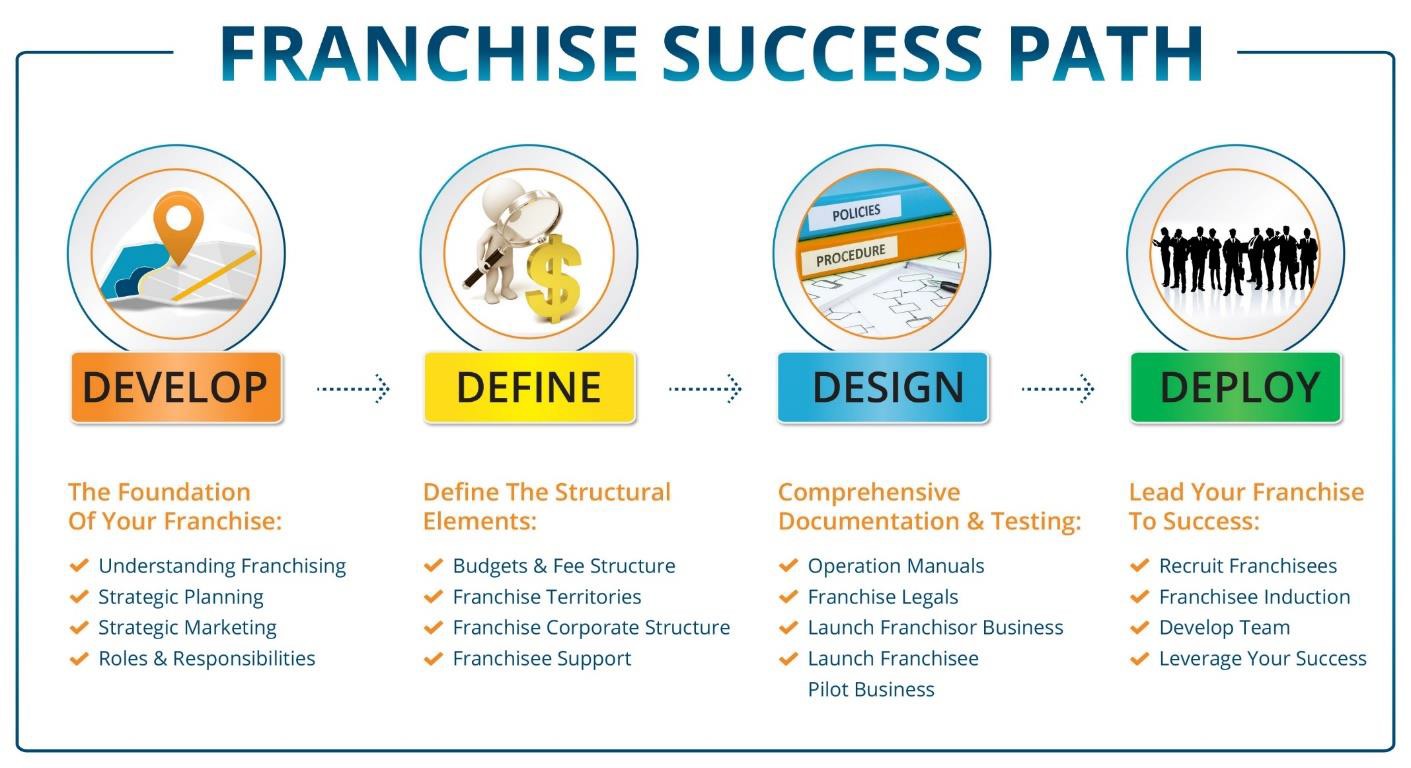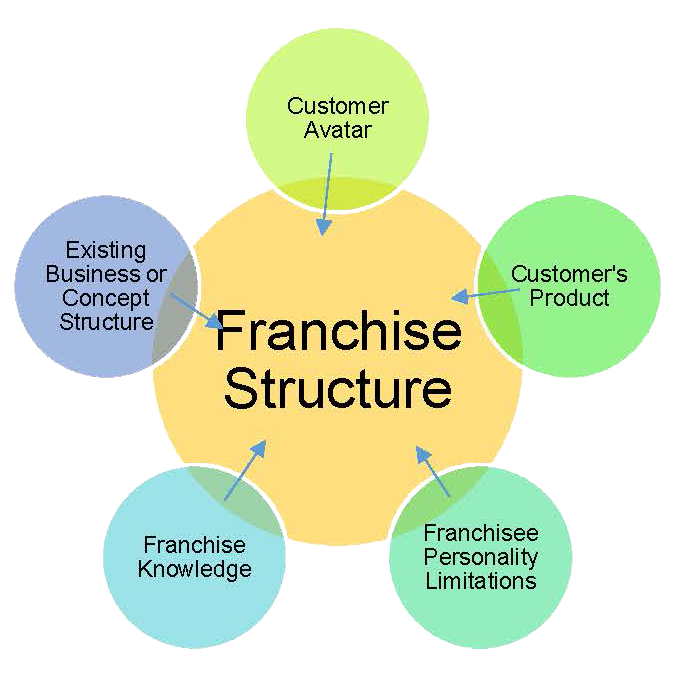Build your Franchise Foundation by Developing the Big Picture
Module One

Introduction to Module One
Unit One
About Franchising
Supporting Material
SM1a: Franchise Radio Show 6, 15 near death experiences in small business franchising, with John O’Brien, CEO of PoolWerx
SM1b: Franchise Radio Show 17, How to Succeed in Franchising in These Tough Times, with John O’Brien, CEO of PoolWerx
SM1c: Franchise Radio Show 43 - How The Chicken Crossed The Road, with Lenard Poulter, CEO of Lenard’s Chickens
SM1d: Franchise Radio Show 32 The Tap Doctor Franchise Group, Tim Wise, ex CEO and Founder
SM1e: Franchise Radio Show 40, The Huge Power of Small, with Paul Dunn CEO and Co-Founder of B1G1
SM1f: Franchise Radio Show 36 How An Entrepreneur Adapts Their Style To Create A Successful Franchise, Tim Wise, ex CEO and Founder of Tap Doctors
SM1g: Franchise Radio Show 27, How To Be Your Industry Expert, It’s Not That Hard, Nic Hayes, MD and founder of Media Stable
SM1h: Franchise Radio Show 42, Programming Franchise Success, Damian McConnell from MindStore Training
SM1i. Brian Keen, How Do I Franchise My Business, 2016
SM1j: Brian Keen, Should I Franchise My Business, 2014
SM1k. Franchise Simply, Useful Resources List, 2016
SM1l: Franchise Radio Show 14, The Magic Of A Mentor: How To Be One, How To Find One, Catherine Palin-Brinkworth, CEO and Founder, BEST Training Systems
SM1m: Franchise Radio Show 52, 3 to 33 Franchises in 3 Years - How One Franchisor Rocket-Propelled His Group, with Jonathan Payne from Xpresso Mobile Cafe
SM1n: Nathan Greg, Profitable Partnerships, 2007
SM1o: Nathan Greg, Franchise Relationships Toolkit, 2015
SM1p: Stephens, Darren, Top Franchise CEO’s Secrets Revealed
Unit Two
Set Up Your Franchise Project
Guides
G1: Franchise Status Review Appraisal Questionnaire
Supporting Material
SM2c: Franchise Radio Show 51, How to Achieve Rapid Yet Sustainable Growth with Dale Beaumont, CEO and Founder of Business Blueprint
SM2b: Franchise Radio Show 45, Smart Operating Procedures and how to organize your systems simply and securely. With Dave Jenyns
SM2a: Radio Show10 , Helping Franchisors and Franchisees Grab Back Their Most Precious Commodity, More Time” Robyn Pearce known around the world as The Time Queen
Unit Three
Personality in a Franchise
Supporting Material
SM3a: Franchise Radio Show 12, The Seven Minute Mindset, with Nick Cownie
SM3b: Franchise Radio Show 47, How to Overcome Your Personal Limitations – mindset is the key to your success, with Paul Blackburn, CEO and Founder, Global Success Academy
Unit Four
The Brand, Marketing and Sales
Supporting Material
SM4a: Franchise Radio Show 31, Selling the Invisible – How to Make Your Brand Stand Out, with Lauren Clemett, CEO and Founder, Ultimate Business Propeller
SM4b: Lauren Clemett from The Ultimate Business Propeller presenting on branding at a Weekend Franchising Training Workshop
SM4c: Franchise Radio Show 30, Razor Marketing: How to Sharpen Your Marketing so it’s Effective, with Brett Jones from Cre8 Marketing
SM4d: Franchise Radio Show 7, Why Every Business Needs a WOW Factor, with John Dwyer
Unit Five
Develop the Brand Strategy
Guides
G2: Brand Strategy
Supporting Material
SM5a: Les and Liz Hannaway from Brilliant Branding presenting at a Weekend Franchise Training Workshop
SM5b: Franchise Radio Show 26, What is Your Customers’ Experience of Your Business, Alisa Newey
Unit Six
Design the Overall Franchise Organization Structure
Unit Seven
Design the Franchisee Organization Structure
Unit Eight
Design the Franchisor Organization Structure
Unit Nine
Brand Plan
Guides
G3: Brand Plan
Unit Ten
Online Marketing
Supporting Material
SM10a: Russell Brunson, Dot Com Secrets, 2015
SM10b: Dave Jenyns, Authority Content, 2016
SM10c: Franchise Radio Show 48, Why SEO And Your Online Marketing Is Not Working, with Dave Jenyns from Melbourne SEO and Video
SM10d: Franchise Radio Show 21, Online Video, A Medium You Should Be Using, with Eric Higgs
Unit Eleven
The Product Marketing Plan, Marketing Schedule and Marketing Fund
Guides
G4: The Product Marketing Plan
G5: Product Marketing Budget Schedule
Supporting Material
SM11a: Notional excerpt from Disclosure Document outlining
Some Terminology
Words are used in so many different ways in the franchise industry. Some are legally defined and others just in general use. Before beginning it is useful to clarify the way we use terms and why.
Legal definitions
Legally, through the Franchise Code of Conduct and Franchise Agreement Template, the
following terms are set.
Franchise System includes a business system in which a franchisor grants a franchise to a franchisee
Franchised Business is one franchise outlet
The Manual or Operations Manual is the franchisee operations manual and includes everything operational needed to run the franchised business, however crafted (audiovisual, graphic, text, software etc.)
Franchise Documentation includes the Operations Manual and all the legal documents and anything else needed to conduct the Franchised Business
A more extensive list of more commonly used terms is included in the appendices.
Franchise Simply definitions
I have extended these terms, however, because I consider it essential that you deal with both sides of a Franchise System, the franchised business operated by your franchisees and your franchisor business.
So…
The Franchise System is the whole franchise group consisting of the franchisor business and the franchised businesses operated by your franchisees.
The franchisee outlet or franchised business will have:
a. Franchisee Documentation which includes:
i. The legal documents (Franchise Agreement and Disclosure Document
and any associated legal docs)
ii. The Franchisee Operations Manual which includes everything operational needed to run the franchised business, however crafted (audiovisual, graphic, text, software etc.)
b. The Franchised Business (goodwill etc.)
The franchisor business will have:
a. Franchisor Documentation which includes:
i. The legal documents (the franchisor is party to the franchise agreement)
and any other legal documents which make up the brand etc.
b. The Franchisor Operations Manual which includes everything operational
needed to run the franchised business, however crafted (audio-visual, graphic,
text, software etc.)The Franchisor Business (goodwill etc.)
Introduction to Module One
Module One is all about setting up the foundation or big picture of your franchise system. It is the essential first step.
But, before we can go into the essence of building that foundation, it is essential to make sure we are all on the same page. So, if you have not read the previous section on Terminology, please can you do so.
The Franchise Simply Success Path
In order to teach people how to convert a business to the franchise model, I ask you to go
through the four Modules of the Franchise Success Path.

Each of the Modules is made up of a number of action based Units.
I will discuss the contents of the Franchise Success Path in more detail in Unit One.
The main thing here, is that you will produce a number of plans and summary documents as you go through the each of the Units in each Module.
All of these plans and summary documents will be used to build both the Franchisor and Franchisee Documentation.
The process goes something like that shown in the diagram below.
-
- Work through each Unit of the Modules (shown running down the left hand side of the diagram below)
- Producing plans and summary documents as shown running across the top of the diagram below
- As you go, also start to collect the systems and part systems you have developed or are thinking of developing for your Operations
- The results of 2 and 3 above will feed into the Franchise Agreement and Operations Manuals you, your experts and your lawyers will write at the end of the process
This diagram shows the Franchise Simply process you will work through.

Start at one and take it step by step
Over many years, working to build franchise systems of many kinds, I have found that it really saves time and repetition and money to follow the process outlined in the Franchise Success Path in sequence.
Many prospective franchisors start the process to convert their business to a franchised structure by diving in to deal with their favorite topic or the topic they feel is the most important. Generally people try to work out their franchise budgets and potential fee structures first. Or they jump straight into trying to build their legal agreements.
Unfortunately, it doesn’t work like that. The figures you will come up with in the absence of having an idea of how your franchise will be structured and operates will not be worth the paper they are written on. And that legal agreement will have to be re-done with all the associated costs and pain. I cannot emphasize enough that you need to start at the beginning and then progress through the process step by step to the end.
Things will go faster, and you will have a more successful operation that way.
Start by building the Big Picture
And so to step one, developing the foundation of your franchise system…
In Module One you will develop the big picture of your franchise group. At the end of this Module, you will understand the franchise organization structure which will be the foundation for your systems. And it will provide the information to help you develop the more detailed elements to run your franchised organization in the future.
In order to do this, in Units Six, Seven and Eight you will be deconstructing your current business or business structure and reconstructing it into at least two businesses, your franchisor business and your franchisee businesses, each with their very different responsibilities.
Before you can do that meaningfully though, you need some information.
First, it really pays to have a good understanding on how franchised businesses work. Although they involve every aspect of managing a good business, there are important differences. You are given a framework to learn about franchising in Unit One
Second, it will help significantly if you understand the opportunities and limitations which exist in people’s characteristics and personality profiles. This information means you will understand the team you need to build in each part of the franchise group, how to best manage them and it is this which will feed into franchise organization structure so it works successfully. Unit Five will cover this issue.
Third, to build the franchise, you do need to understand your ideal customer, their fears, frustrations and desires and how you should promote and deliver your product to meet their wants best. You do this in Units Three and Four which will result in a Brand Strategy outlining your business values, and the principles behind your product and the brand to meet your ideal customers’ desires.

Brand and Marketing Plans
Once you have the overall franchise structure in place, we ask you to build the brand and marketing details in your Brand and Marketing Plans. These detailed plans need to be completed early because they will give you an idea of the money you need to spend on keeping the brand alive and marketing your product in the future. These figures will feed into your budgets which will be developed in Module 2. Units Nine, Ten and Eleven will cover these details in the brand plan and marketing issues.
Module Two
Then once you have this foundation in place, you will find it easier to move into Module Two where you will start to look at the detail in various elements of your franchise (things like budgets, fees, territories, communication and so on).